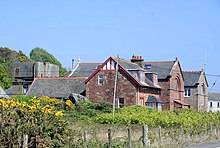Cumbrae's marine research history
CC BY-SA, Millport Marine Biological station - John McLeish
Cumbrae's marine research history
The isle of Cumbrae’s reputation for marine research goes back to the late 19th century, thanks to David Robertson, the gifted amateur naturalist and geologist who made the island his home.
Born in Glasgow in 1806, Robertson was better known as the Cumbrae Naturalist, as early on in his life, his interests had turned to the study of Millport’s Natural History. In 1884, inspired by oceanographer Sir John Murray and the discoveries of his ‘Challenger’ expedition, he successfully persuaded the Glasgow professional and business community to fund the building of a marine station in Cumbrae. As a result of his endeavours, Murray’s floating laboratory and study ship The Ark was moved to Port Loy in 1885 as a base to study the rich local marine fauna and flora and in 1987, the marine station opened. It consisted of a laboratory, museum, and public aquarium, too late by a year for Davidson to see his vision realised.
Destroyed by a storm in 1904, The Ark was then replaced by the Scotia, from the Scottish National Antarctic expedition. From 1914 to 2013, the station became known as the Scottish Marine Biological Association and was run by the University of London until it was finally taken over by the Field Study Council as FSC MIllport
Throughout the course of its existence, the station has attracted a stream of distinguished scientists who came to work on their specialist projects, amongst which were important studies on the plankton and seaweed by Dr Sheina Marshall of Glasgow University.
More information on visiting the area can be found here.
